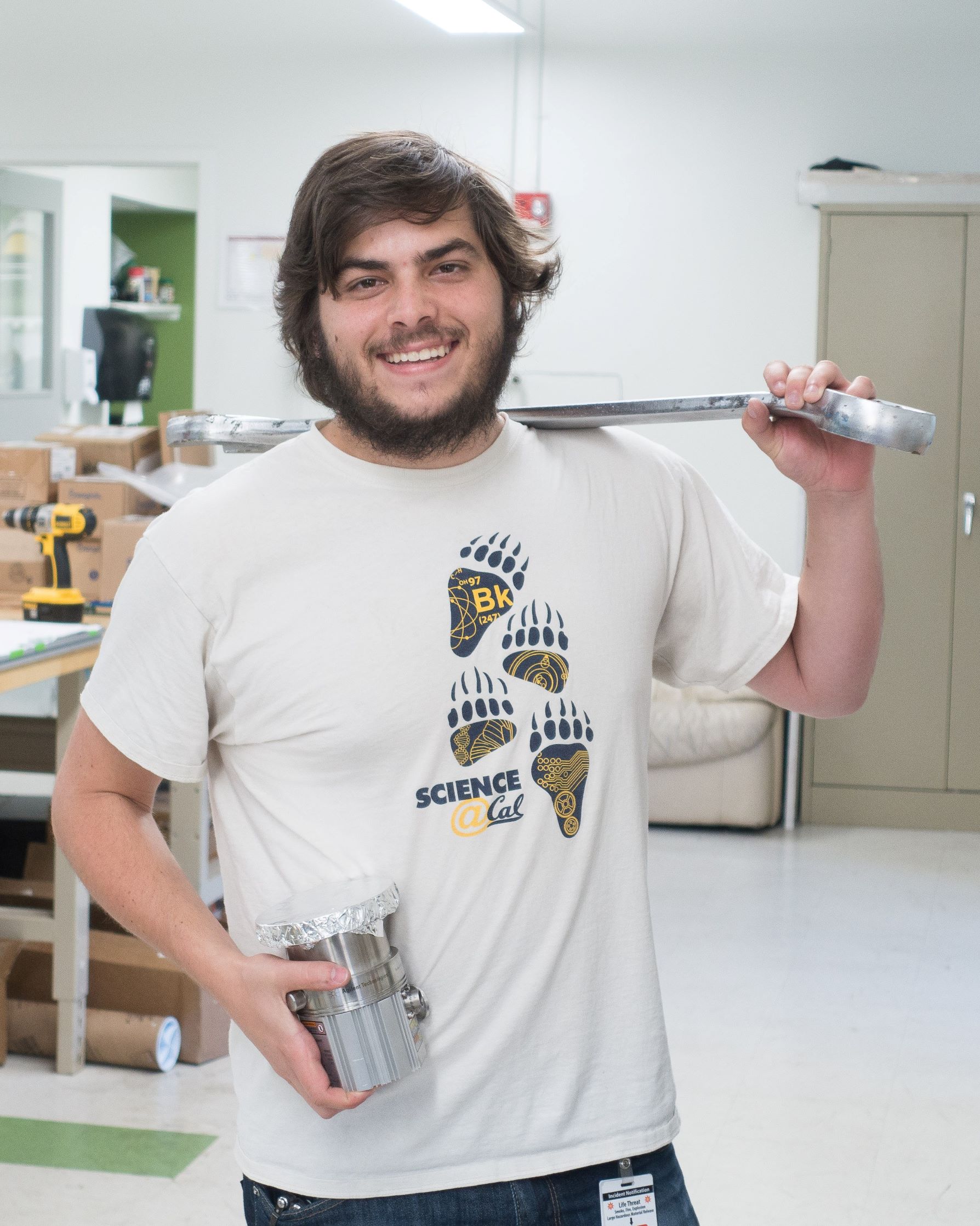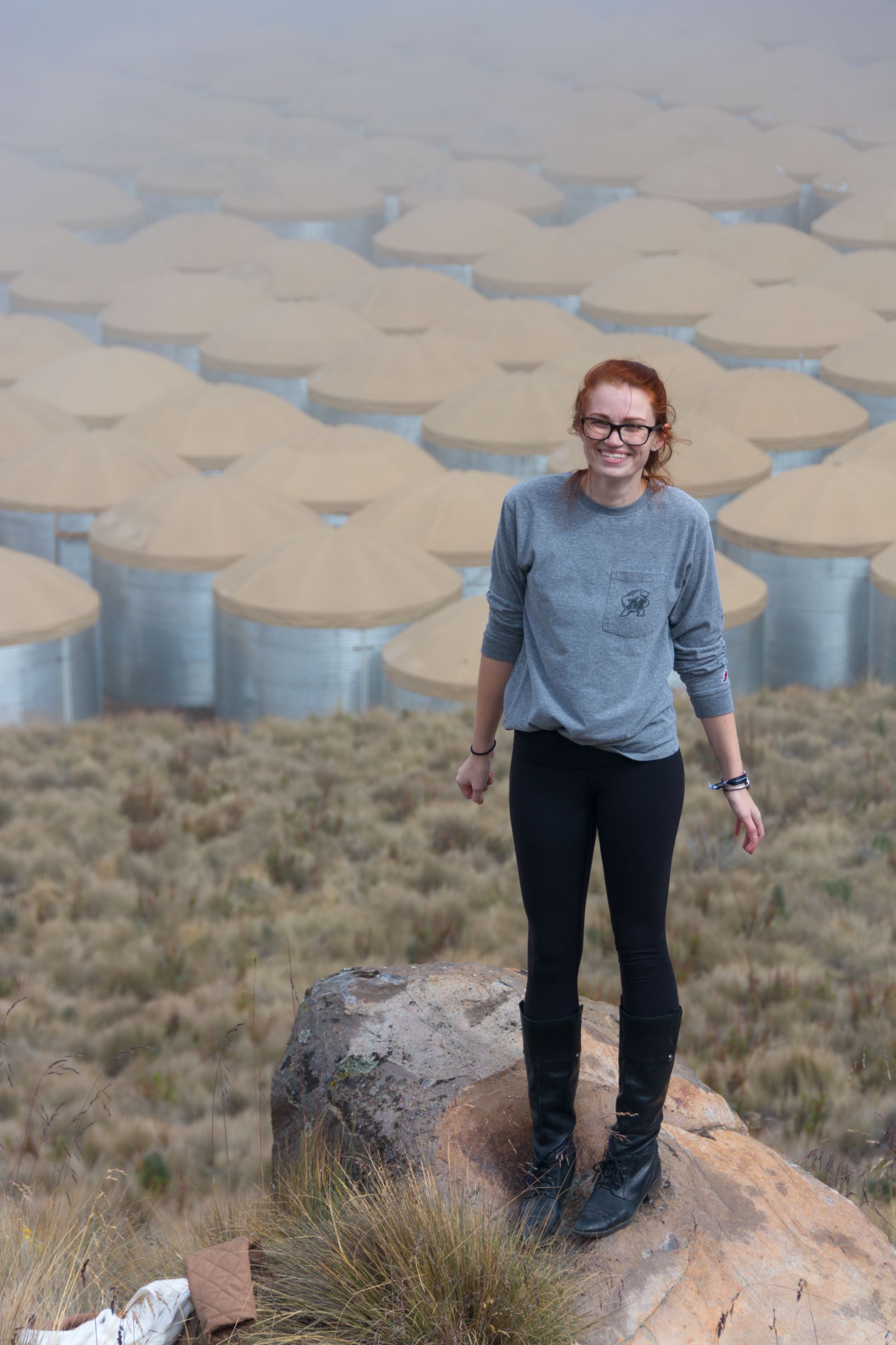Three UMD students were among 62 recently selected for funding by the Department of Energy’s Office of Science Graduate Student Research (SCGSR) Program. The SCGSR program helps students carry out thesis research in 14 Do Eli MizrachiE national laboratories, in subjects central to the Office of Science mission areas.
Eli MizrachiE national laboratories, in subjects central to the Office of Science mission areas.
Eli Mizrachi, who works with Carter Hall, was selected for the proposed SCGSR research project, "Effects of Impurities on Low Energy Electron Signals in Xenon-Based Dark Matter Searches" at Lawrence Livermore National Laboratory (LLNL). The aim of the project is to modify an existing liquid xenon particle detector to accommodate ceramic components in place of plastic ones. The new ceramic components are expected to introduce fewer impurities into the detector, thereby improving the detector's sensitivity to single-electron signals from low energy particle interactions. An increased level of sensitivity in this regime may extend the reach of xenon-based low-mass WIMP dark matter searches, and open up new opportunities for monitoring nuclear reactors with compact, portable detectors.
 Kristie Engel at the HAWC installation near Puebla, MexicoKristi Lynne Engel, who works with Jordan Goodman, was selected for the proposal, “Constraining Primordial Black Hole Dark Matter with HAWC”, to be conducted at Los Alamos National Laboratory (LANL). One of the biggest questions in high energy physics today pertains to determining the particles that make up cosmic dark matter. Primordial Black Holes (PBHs) in certain mass ranges (<< one solar mass) constitute a possible dark matter candidate. Since the existence of stellarmass black holes was recently confirmed during the first observational run of Advanced LIGO, there has been a resurgence in support for a PBH component of the total dark matter energy density. Engel intends to her advance her previous work from the High Altitude Water Cherenkov (HAWC) Observatory to search for PBH bursts to further constrain the local PBH density and, consequently, the fraction of dark matter that may be made up of PBHs. Engel intends to use instrumental calibration, algorithm improvements, and better data/detector Monte Carlo agreement to improve the sensitivity of HAWC to transient searches and dark matter analyses.
Kristie Engel at the HAWC installation near Puebla, MexicoKristi Lynne Engel, who works with Jordan Goodman, was selected for the proposal, “Constraining Primordial Black Hole Dark Matter with HAWC”, to be conducted at Los Alamos National Laboratory (LANL). One of the biggest questions in high energy physics today pertains to determining the particles that make up cosmic dark matter. Primordial Black Holes (PBHs) in certain mass ranges (<< one solar mass) constitute a possible dark matter candidate. Since the existence of stellarmass black holes was recently confirmed during the first observational run of Advanced LIGO, there has been a resurgence in support for a PBH component of the total dark matter energy density. Engel intends to her advance her previous work from the High Altitude Water Cherenkov (HAWC) Observatory to search for PBH bursts to further constrain the local PBH density and, consequently, the fraction of dark matter that may be made up of PBHs. Engel intends to use instrumental calibration, algorithm improvements, and better data/detector Monte Carlo agreement to improve the sensitivity of HAWC to transient searches and dark matter analyses.
 John Collini
John Collini
John Collini, who works in the Quantum Materials Center (QMC) with Johnpierre Paglione, will investigate properties of the topological superconductor uranium ditelluride (UTe2) using chemical synthesis and high pressure x-ray experiments. Recently discovered by QMC researchers, UTe2 harbors a rare form of spin-triplet superconductivity that gives rise to unprecedented properties such as survival under extreme magnetic fields and topological protection. Collini will pursue this project via a placement at Livermore, under the advisement of Jason Jeffries, leader of the LLNL High Pressure Group.
To learn more about the awards program, visit the DoE Office of Science page: https://science.osti.gov/wdts/scgsr/SCGSR-Awards